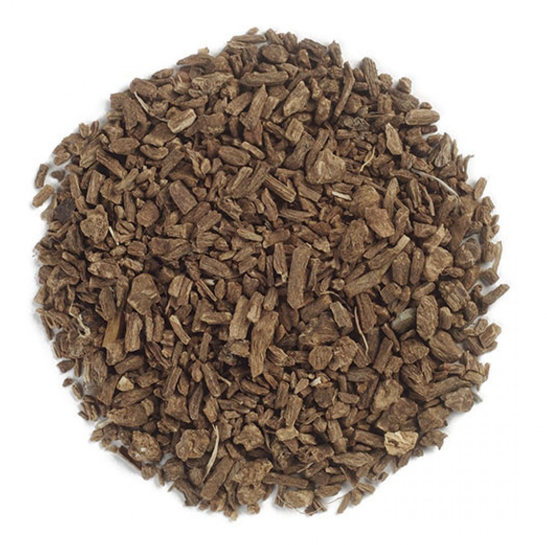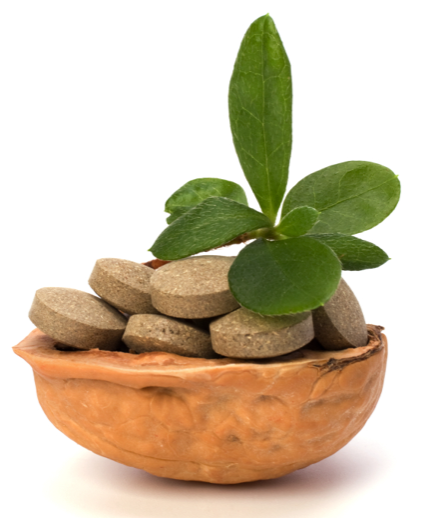
Nomenclature:
· Scientific name (binomial): Valeriana officinalis
· Family name: Valerianaceae family
· Common name: valerian, setwall
Part(s) Used: Rhizome, stolon, root (Hoffman, 2003; ODS, 2013)
Taste/odor: The root has a peculiar pungent and camphoraceous odor while the taste is acrid, nauseous, and sweet-bitter (NLM, 2014; Cook, 1869)
Energetics: Warming, Drying
Actions: Nervine, hypnotic, sedative, tranquilizer, relaxant, antispasmodic, hypotensive, antiulcerogenic analgesic, carminative, anti-inflammatory, astringent, emmenagogue (Hoffman, 2003; Cook, 1869)

Traditional uses: Valerian has a long history of medicinal use in ancient Greece and Rome, and it was used as a sedative as well as a treatment option for UTI, PMS, digestive problems, and insomnia. Valerian use expanded in the sixteenth century, and in addition to its already existing uses it was consumed to remedy nervousness, trembling, headaches, and heart palpitations. Valerian was essential during World War I as it was used for the treatment of soldiers suffering from post-traumatic stress (NLM, 2014). From 1820-1936 valerian was recognized as an official medicine in the United States Pharmacopoeia. Presently in Germany, valerian is approved and is in use as over-the-counter medicine for insomnia (Sharma et al., 2010).
Therapeutic uses (indications): insomnia, headaches, migraine, colic, peptic ulcers, dyspepsia, irritable bowel syndrome, menstrual cramps, muscle cramping, hypertension, stress-related heart conditions, anxiety, nervous agitation, excitability, chorea, neuralgia, muscle spasms, epileptic seizures, and attention deficit hyperactivity disorder (ADHD) (Hoffman, 2003; NLM, 2014)

Preparations and Dose: Valerian can be used in various forms: tea, tincture, capsules and/or tablets.
Dried root Infusion (as tea): 2–3 g of dried root per 1 cup (236 ml) of boiling water, prepare in a closed vessel to ensure no loss of volatile oils, and take 45min before bedtime (Pizzorno et al., 2002; Hoffman, 2003)
Tincture: (1:5 in 60%), 4–6ml (1–1.5tsp), 45min before bedtime (Pizzorno et al., 2002)
Fluid extract (1:1), 1–2ml (0.5–1tsp), 45min before bedtime (Pizzorno et al., 2002)
Dry powdered extract: 400 - 450 mg of valerian dry powdered extract, 30 minutes before bedtime for 2 weeks (NLM, 2014).

Scientific section: A randomized, double-blind, placebo-controlled, cross-over study conducted on 16 patients (4 male, 12 female) age range of 22 to 55 with a confirmed psychophysiological insomnia, established that patients that received valerian extract showed positive results than those that received the placebo. All 16 participants suffered from insomnia which was confirmed by their medical history, medical examination, the results from control polysomnography, and other subjective parameters evaluated by questionnaires such as sleep quality, morning feeling, daytime alertness, and duration of sleep time. The patients were instructed to take 2 tablets, each containing 300 mg of dry valerian extract with a drug/extract ratio of 5 : 1, 1 hour before bedtime (total of 600 mg and normally the recommended dose is 100 mg - 300 mg). The study discovered that valerian was more effective when administered in higher doses (multiple-dose treatment) compared to the single dose. It also revealed that a long term valerian treatment was more effective than a short term treatment, as the effects/result are delayed (Donath et al., 2000). Another double blinded study conducted on 60 female Iranian students evidenced the effectiveness and safety of valerian root extract in reducing menstrual pain compared to placebo. The severity of psychological, physical, behavioral and overall symptoms of PMS improved in the valerian group, after 1-2 months of taking 530 mg valerian capsules, compared to the control group. The study demonstrated that valerian can be an excellent alternative treatment for women suffering from PMS.( Maleki-Saghooni et al., 2018).
Safety: Adverse events reported with the use of valerian are not only rare but also required no intervention. One of the adverse events reported in a clinical trial is increased sleepiness the morning after the ingestion of 900 mg of valerian, while the use of 600 mg did not show a substantial change in attentiveness or concentration (NLM, 2014). As a precautionary measure, NIH Office of Dietary supplements advises pregnant and nursing woman, as well as children younger than 3 years old, to abstain from consuming valerian as the possible risks have not been examined (ODS, 2013). While the European Medicines agency advises to not use valerian in children under the age of 12 years old and adds that adults consuming valerian should not drive or use machines due to its sedative effects (EMA, 2006). No pharmacological interactions have been reported to date (Hoffman, 2003).
References
Cook, W. (1869). The Physiomedical Dispensatory. Retrieved from https://www.henriettes-herb.com/eclectic/cook/VALERIANA_OFFICINALIS.htm
Donath, F., Quispe, S., Diefenbach, K., Maurer, A., Fietze, I. & Roots, I. (2000). Critical Evaluation of the Effect of Valerian Extract on Sleep Structure and Sleep Quality. Pharmacopsychiatry, 33, 47 – 53. DOI: 10.1055/s-2000-7972
European Medicines Agency. (2006). Community Herbal Monograph on Valeriana Officinalis L., Radix. Retrieved from https://www.ema.europa.eu/en/documents/herbal-monograph/superseded-final-community-herbal-monograph-valeriana-officinalis-l-radix_en.pdf
Hoffman, D. (2003). Medical herbalism: The science and practice of herbal medicine. Rochester, VT: Healing Arts Press.
Maleki-Saghooni, N., Karimi, F. Z., Behboodi Moghadam, Z. & Mirzaii Najmabadi, K. (2018). The effectiveness and safety of Iranian herbal medicines for treatment of premenstrual syndrome: A systematic review. Avicenna journal of phytomedicine, 8, 96–113. https://www.ncbi.nlm.nih.gov/pmc/articles/PMC5885324/
National Institutes of Health Office of Dietary Supplements. (2013). Valerian: Fact Sheet for Health Professionals. Retrieved from https://ods.od.nih.gov/factsheets/Valerian-HealthProfessional/
Pizzorno, L. U., Pizzorno, J. E., & Murray, M.T. (2002). Natural Medicine Instructions for Patients: Insomnia. Retrieved from https://books.google.com/books?id=e_xEF3gwmmoC&lpg=PP1&pg=PR22#v=onepage&q&f=false
U.S. National Library of Medicine. (2014). Valerian Root. Retrieved from https://toxnet.nlm.nih.gov/cgi-bin/sis/search/a?dbs+hsdb:@term+@DOCNO+1964
Note: Information found on this website is meant for educational purposes only. It is not meant to diagnose medical conditions, to treat any medical conditions or to prescribe medicine.

コメント